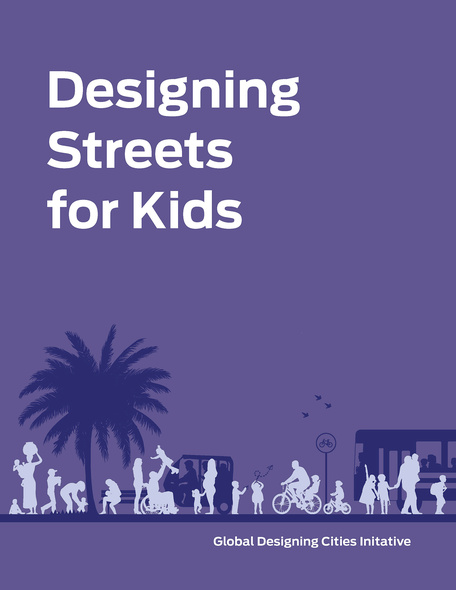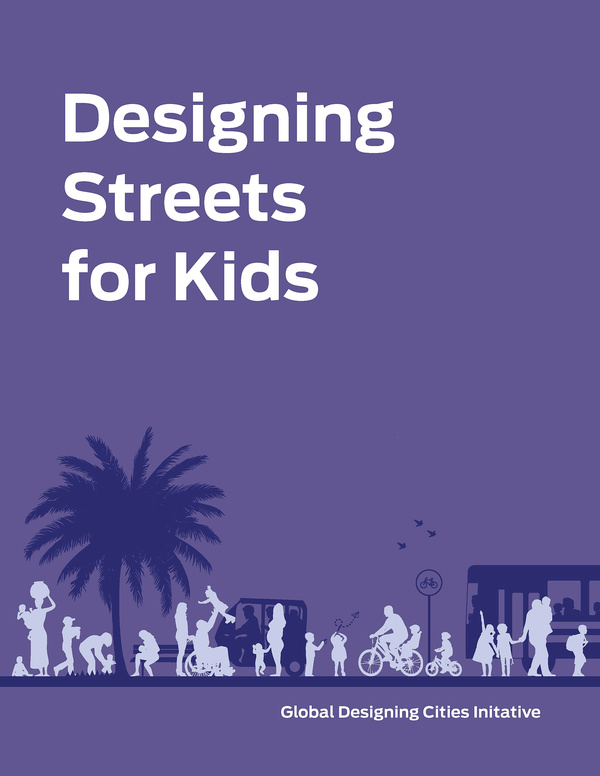Designing Streets for Kids
Building on the success of their Global Street Design Guide, the National Association of City Transportation Officials (NACTO)-Global Designing Cities Initiative (GDCI) Streets for Kids program has developed child-focused design guidance to inspire leaders, inform practitioners, and empower communities around the world to consider their city from the eyes of a child.
The guidance in Designing Streets for Kids captures international best practices, strategies, programs, and policies that cities around the world have used to design streets and public spaces that are safe and appealing to children from their earliest days. The guidance also highlights tactics for engaging children in the design process, an often-overlooked approach that can dramatically transform how streets are designed and used.
From addressing the lack of mobility options to noise and air pollution, this graphics-rich guide will help to design better streets, and thereby better cities, for kids of all ages and their caregivers. Designing Streets for Kids provides both inspiration and application. By focusing speci?cally on children and caregivers, this book fills a significant void in physical urban design guidance.
Foreword
About this Guide
Streets for Kids Around the World
Section A: Designing Streets for Kids
1.0 Street Users and Their Needs
1.1 A Variety of Street Users
2.0 Why Design Streets for Kids and Caregivers?
2.1The Benefits of Designing Streets for Kids
2.2 Risks and Challenges in the Twenty-First Century
2.3 Kids, Design, and Urban Streets: A Brief History
3.0 Streets for Kids: Key Principles
3.1 Key Principles
Section B: Street Design Elements
4.0 What Do Children and Caregivers Need from the Street?
4.1 Independent and Improved Mobility
4.2 Places to Pause, Stay, and Play
5.0 Planning and Design at Multiple Scales
5.1 Approaching Design from Multiple Scales
6.0 Elements of Streets for Kids
6.1 Street Design Elements
Section C: Street Design Strategies
7.0 Street Design Strategies
7.1 Activate: Make the Most of What You Have
7.2 Slow Vehicles
7.3 Reduce the Number of Cars
7.4 Reclaim Space in Streets for Children and Caregivers
7.5 Integrate Adjacent Public and Building Spaces
8.0 Contextualizing Street Transformations
8.1 Large Streets
8.2 Neighborhood Streets
8.3 Residential Streets
8.4 Streets Near Kids’ Facilities
8.5 Intersections
8.6 Miscellaneous
Section D: How to Make Change Happen
9.0 Planning and Implementing Change
9.1 Action Place: How to Implement Streets for Kids
9.2 Making a Strong Case for Children
9.3 Involving Stakeholders
9.4 Seeing is Believing: Demonstrating Possibilities
9.5 Operations
9.6 Measuring, Evaluating, and Monitoring
9.7 Raising Awareness and Sharing Knowledge
10.0 Empowering Change
10.1 Programs
10.2 Policies
10.3 Comprehensive Approach Resources/Appendix





